Kitāb al-mawālīd
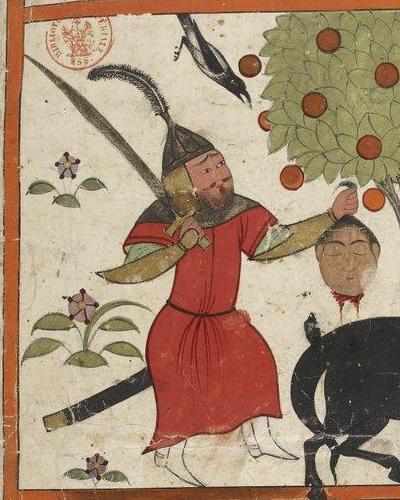 4v Aries 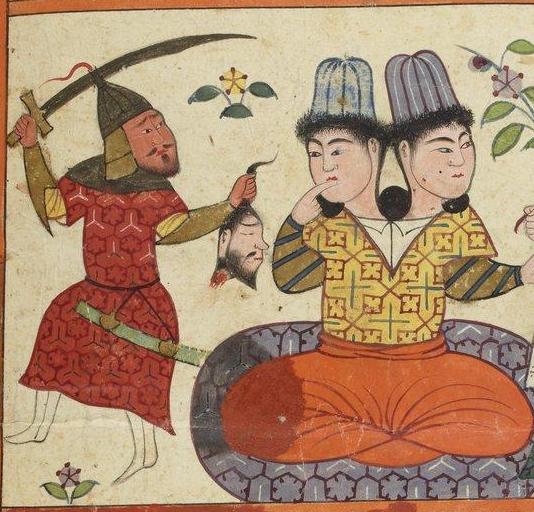 9v Gemini |
|
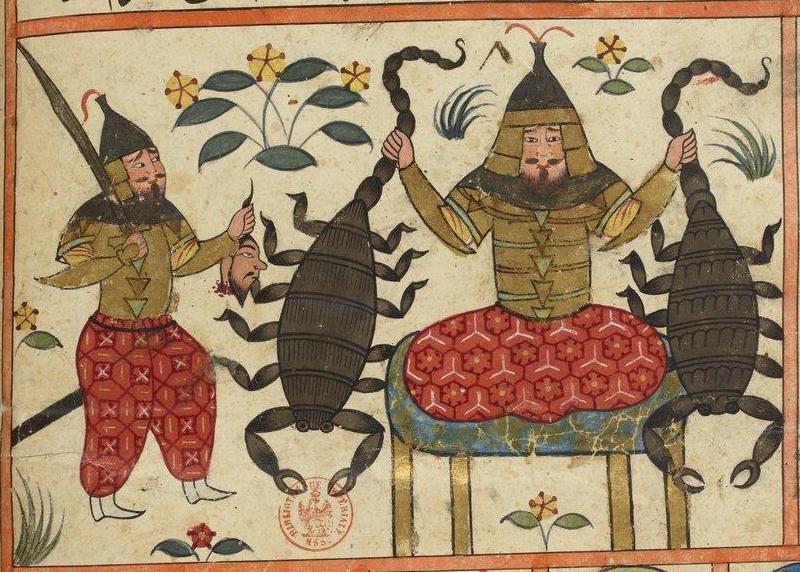
22v Scorpio
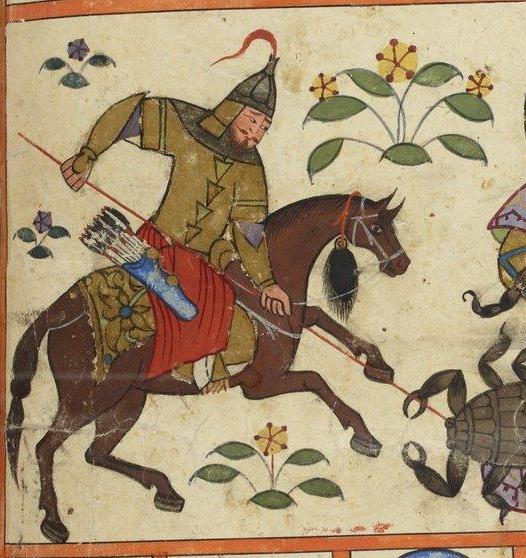
23v Scorpio
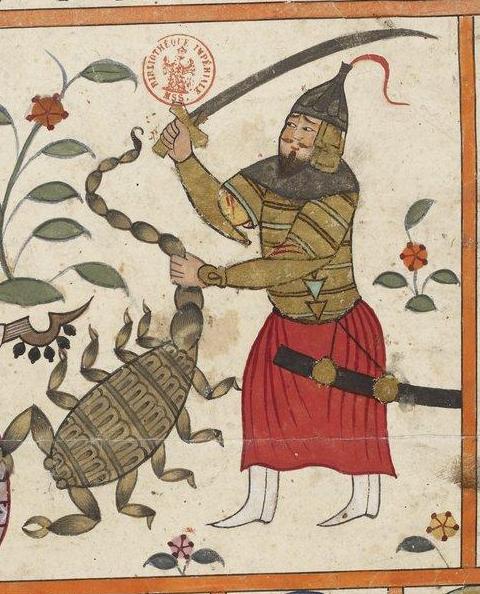
24v Scorpio
 4v Aries  9v Gemini |
|



Referenced on p17, The Mamluks - 1250-1517 by David Nicolle:
This Arabic treatise on astrology by Abu Ma'shar al Balkhi may have been made in mid-14th-century Iraq or in the Mamluk Sultanate. The equipment illustrated is likely to have been common to both sides. Here 'Mars' slays 'Scorpio' with a large sabre. He has the usual pointed helmet with ear or cheek pieces and a mail aventail over his shoulders. His lamellar jawshan, however, includes sleeves, and appears to open down the side. (Bib. Nat., Ms. Ar. 2583, f.24v, Paris)
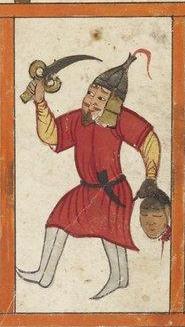 from 21v Libra |
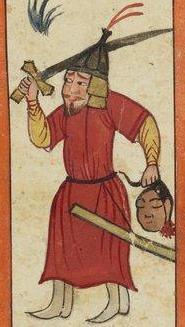 from 27v Sagittarius |
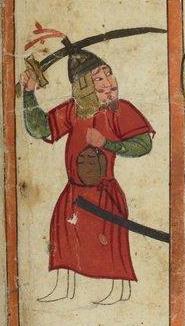 from 35v Pisces |
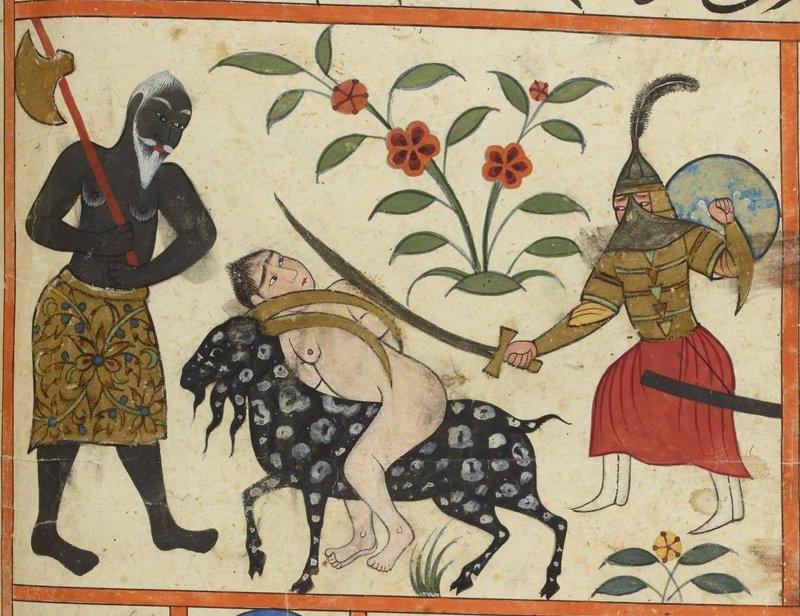
Title : Book of nativities, attributed to Abu Maʿschar
Author of text: Abū Maʿšar al-Balḥī, Ğaʿfar ibn Muḥammad ibn ʿUmar (0805?-0886).
Publication Date : 1300
Subject: Astrology
Type: manuscript
Language: Arabic
Format: Many coloured drawings, the first four represent Satan and other demons. - Paper. - 37 sheets. - Height, 36 inches; width 26 and a half centimeters. About 27 lines per page.
Source : Bibliothèque nationale de France, Département des manuscrits, Arabe 2583
Description : Kitab al-mawālīd
Description: The drawings show the figures of the zodiac signs, the phases of the moon personified, and other bizarre pictures. The first pages are missing. The last two pages, more modern than the rest of the ms., are dated to the year 700 AH (1300 AD).
Referenced as figure 651 in The military technology of classical Islam by D Nicolle
651. Manuscript, Astrology of Abū Maʿshar al Balkhī, early 14th century AD , Egyptian (?), Bib. Nat., Ms. Ar. 2583, Paris. (Hal).
p222 Plumes are easier to pin down. In 10th century Khurāsān they were known as par santīz.59 They are also very common in the pictorial sources. This is particularly true of the eastern regions, both Islamic and non-Islamic, from where the tall helmet plume or feather may have spread west as part of a general adoption of Persian or Central Asian military fashions 618, 67, 90, 91, 196, 330, 422, 439, 455, 464, 574 and 651).
59. Firdawsī, op. cit., p. 427
618. Helmet from Gnezdovo, 10th century AD, Kievan Russian, State Hist. Museum, Moscow (Kir M).
67. Fresco from Eastern Temple, Tumsuk, late 6th century AD, east Turkistānī (in situ. ex-Stein S).
90. Silvered dish, Isola Rizza Dish, late 6th-early 7th centuries AD, Byzantine or Lombardo-Byzantine, Castelvecchio Museum, Verona (Hes).
91. Bronze brow-plate of a helmet, late 6th-early 7th centuries AD, Lombardo-Byzantine, Bargello, Florence (Gui, Dix).
196A to 196D. Silver plates, A - 'Israelites, Goliath and Philistines,' B - 'David with Saul's armour,' C - 'Saul's soldiers,' D - 'David annointed,' The David Plates 613-629 AD, Byzantine, Metropolitan Museum, New York (WRW).
330A to 330I. Rock-cut statue, early 7th century AD, Sassanian, in it Ṭāq-i Bustān (Fuk).
422A to 422X. Manuscript, Warqa wa Gulshāh, 12th century AD, Azarbayjān, Topkapu Lib., Ms. Hazine 841, ff. 13/15a, 3/6a, 3/6a, 4/7b, 7/9b, 8/10b, 9/11a, 10/12a, 11/13a, 12/13b, 13/15a, 17/18a, 20/20a, 22/21b, 23/22a, 24/23b, 24/25b, 37/35a, 38/36b, 39/37b, 40/38b, 43/40a and 69/66a, Istanbul (Malik).
455. Statuette from Sorcuk, 8th century AD, east Turkistānī, Museum für Völk., Staatliche Museen Dahlem, West Berlin (Coq).
464. Painted paper fragment from Yār, 9th century AD, east Turkistānī, Staatliche Murseen Dahlem, West Berlin (Coq).
574. Relief, late 11th century AD, Italo-Norman, in situ, Church of San Bernadetto, Brindisi.